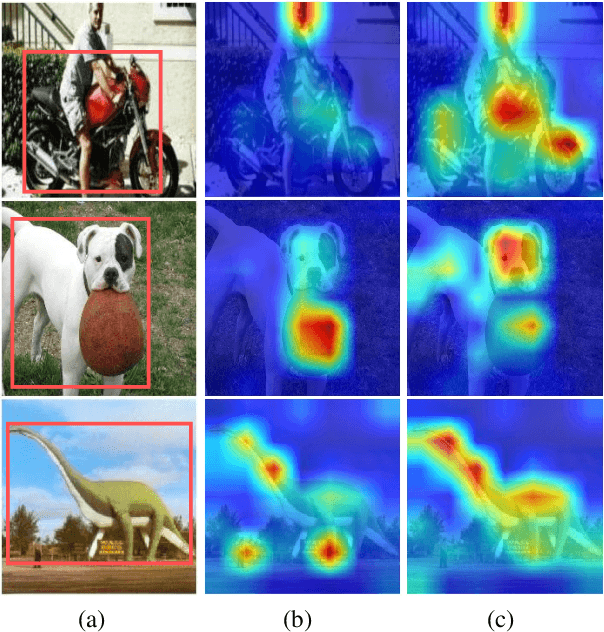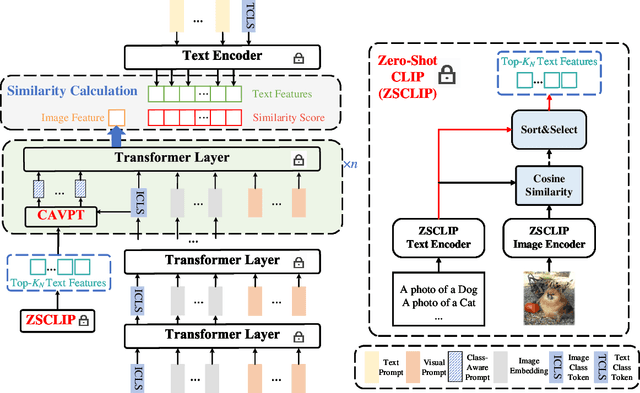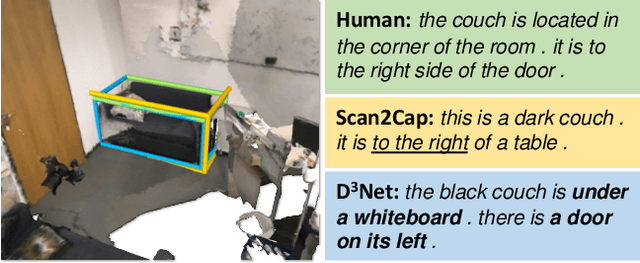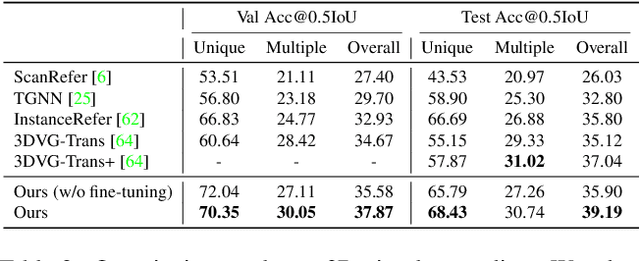Qirui Wu
Digital Twin Generation from Visual Data: A Survey
Apr 17, 2025Abstract:This survey explores recent developments in generating digital twins from videos. Such digital twins can be used for robotics application, media content creation, or design and construction works. We analyze various approaches, including 3D Gaussian Splatting, generative in-painting, semantic segmentation, and foundation models highlighting their advantages and limitations. Additionally, we discuss challenges such as occlusions, lighting variations, and scalability, as well as potential future research directions. This survey aims to provide a comprehensive overview of state-of-the-art methodologies and their implications for real-world applications. Awesome list: https://github.com/ndrwmlnk/awesome-digital-twins
Demystifying Catastrophic Forgetting in Two-Stage Incremental Object Detector
Feb 08, 2025Abstract:Catastrophic forgetting is a critical chanllenge for incremental object detection (IOD). Most existing methods treat the detector monolithically, relying on instance replay or knowledge distillation without analyzing component-specific forgetting. Through dissection of Faster R-CNN, we reveal a key insight: Catastrophic forgetting is predominantly localized to the RoI Head classifier, while regressors retain robustness across incremental stages. This finding challenges conventional assumptions, motivating us to develop a framework termed NSGP-RePRE. Regional Prototype Replay (RePRE) mitigates classifier forgetting via replay of two types of prototypes: coarse prototypes represent class-wise semantic centers of RoI features, while fine-grained prototypes model intra-class variations. Null Space Gradient Projection (NSGP) is further introduced to eliminate prototype-feature misalignment by updating the feature extractor in directions orthogonal to subspace of old inputs via gradient projection, aligning RePRE with incremental learning dynamics. Our simple yet effective design allows NSGP-RePRE to achieve state-of-the-art performance on the Pascal VOC and MS COCO datasets under various settings. Our work not only advances IOD methodology but also provide pivotal insights for catastrophic forgetting mitigation in IOD. Code will be available soon.
Diorama: Unleashing Zero-shot Single-view 3D Scene Modeling
Nov 29, 2024



Abstract:Reconstructing structured 3D scenes from RGB images using CAD objects unlocks efficient and compact scene representations that maintain compositionality and interactability. Existing works propose training-heavy methods relying on either expensive yet inaccurate real-world annotations or controllable yet monotonous synthetic data that do not generalize well to unseen objects or domains. We present Diorama, the first zero-shot open-world system that holistically models 3D scenes from single-view RGB observations without requiring end-to-end training or human annotations. We show the feasibility of our approach by decomposing the problem into subtasks and introduce robust, generalizable solutions to each: architecture reconstruction, 3D shape retrieval, object pose estimation, and scene layout optimization. We evaluate our system on both synthetic and real-world data to show we significantly outperform baselines from prior work. We also demonstrate generalization to internet images and the text-to-scene task.
R3DS: Reality-linked 3D Scenes for Panoramic Scene Understanding
Mar 18, 2024



Abstract:We introduce the Reality-linked 3D Scenes (R3DS) dataset of synthetic 3D scenes mirroring the real-world scene arrangements from Matterport3D panoramas. Compared to prior work, R3DS has more complete and densely populated scenes with objects linked to real-world observations in panoramas. R3DS also provides an object support hierarchy, and matching object sets (e.g., same chairs around a dining table) for each scene. Overall, R3DS contains 19K objects represented by 3,784 distinct CAD models from over 100 object categories. We demonstrate the effectiveness of R3DS on the Panoramic Scene Understanding task. We find that: 1) training on R3DS enables better generalization; 2) support relation prediction trained with R3DS improves performance compared to heuristically calculated support; and 3) R3DS offers a challenging benchmark for future work on panoramic scene understanding.
Generalizing Single-View 3D Shape Retrieval to Occlusions and Unseen Objects
Dec 31, 2023Abstract:Single-view 3D shape retrieval is a challenging task that is increasingly important with the growth of available 3D data. Prior work that has studied this task has not focused on evaluating how realistic occlusions impact performance, and how shape retrieval methods generalize to scenarios where either the target 3D shape database contains unseen shapes, or the input image contains unseen objects. In this paper, we systematically evaluate single-view 3D shape retrieval along three different axes: the presence of object occlusions and truncations, generalization to unseen 3D shape data, and generalization to unseen objects in the input images. We standardize two existing datasets of real images and propose a dataset generation pipeline to produce a synthetic dataset of scenes with multiple objects exhibiting realistic occlusions. Our experiments show that training on occlusion-free data as was commonly done in prior work leads to significant performance degradation for inputs with occlusion. We find that that by first pretraining on our synthetic dataset with occlusions and then finetuning on real data, we can significantly outperform models from prior work and demonstrate robustness to both unseen 3D shapes and unseen objects.
Physics-enhanced Gaussian Process Variational Autoencoder
May 15, 2023Abstract:Variational autoencoders allow to learn a lower-dimensional latent space based on high-dimensional input/output data. Using video clips as input data, the encoder may be used to describe the movement of an object in the video without ground truth data (unsupervised learning). Even though the object's dynamics is typically based on first principles, this prior knowledge is mostly ignored in the existing literature. Thus, we propose a physics-enhanced variational autoencoder that places a physical-enhanced Gaussian process prior on the latent dynamics to improve the efficiency of the variational autoencoder and to allow physically correct predictions. The physical prior knowledge expressed as linear dynamical system is here reflected by the Green's function and included in the kernel function of the Gaussian process. The benefits of the proposed approach are highlighted in a simulation with an oscillating particle.
Class-Aware Visual Prompt Tuning for Vision-Language Pre-Trained Model
Aug 22, 2022



Abstract:With the emergence of large pre-trained vison-language model like CLIP, transferrable representations can be adapted to a wide range of downstream tasks via prompt tuning. Prompt tuning tries to probe the beneficial information for downstream tasks from the general knowledge stored in both the image and text encoders of the pre-trained vision-language model. A recently proposed method named Context Optimization (CoOp) introduces a set of learnable vectors as text prompt from the language side, while tuning the text prompt alone can not affect the computed visual features of the image encoder, thus leading to sub-optimal. In this paper, we propose a dual modality prompt tuning paradigm through learning text prompts and visual prompts for both the text and image encoder simultaneously. In addition, to make the visual prompt concentrate more on the target visual concept, we propose Class-Aware Visual Prompt Tuning (CAVPT), which is generated dynamically by performing the cross attention between language descriptions of template prompts and visual class token embeddings. Our method provides a new paradigm for tuning the large pre-trained vision-language model and extensive experimental results on 8 datasets demonstrate the effectiveness of the proposed method. Our code is available in the supplementary materials.
D3Net: A Speaker-Listener Architecture for Semi-supervised Dense Captioning and Visual Grounding in RGB-D Scans
Dec 02, 2021



Abstract:Recent studies on dense captioning and visual grounding in 3D have achieved impressive results. Despite developments in both areas, the limited amount of available 3D vision-language data causes overfitting issues for 3D visual grounding and 3D dense captioning methods. Also, how to discriminatively describe objects in complex 3D environments is not fully studied yet. To address these challenges, we present D3Net, an end-to-end neural speaker-listener architecture that can detect, describe and discriminate. Our D3Net unifies dense captioning and visual grounding in 3D in a self-critical manner. This self-critical property of D3Net also introduces discriminability during object caption generation and enables semi-supervised training on ScanNet data with partially annotated descriptions. Our method outperforms SOTA methods in both tasks on the ScanRefer dataset, surpassing the SOTA 3D dense captioning method by a significant margin (23.56% CiDEr@0.5IoU improvement).
Plan2Scene: Converting Floorplans to 3D Scenes
Jun 09, 2021



Abstract:We address the task of converting a floorplan and a set of associated photos of a residence into a textured 3D mesh model, a task which we call Plan2Scene. Our system 1) lifts a floorplan image to a 3D mesh model; 2) synthesizes surface textures based on the input photos; and 3) infers textures for unobserved surfaces using a graph neural network architecture. To train and evaluate our system we create indoor surface texture datasets, and augment a dataset of floorplans and photos from prior work with rectified surface crops and additional annotations. Our approach handles the challenge of producing tileable textures for dominant surfaces such as floors, walls, and ceilings from a sparse set of unaligned photos that only partially cover the residence. Qualitative and quantitative evaluations show that our system produces realistic 3D interior models, outperforming baseline approaches on a suite of texture quality metrics and as measured by a holistic user study.
 Add to Chrome
Add to Chrome Add to Firefox
Add to Firefox Add to Edge
Add to Edge